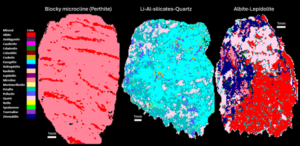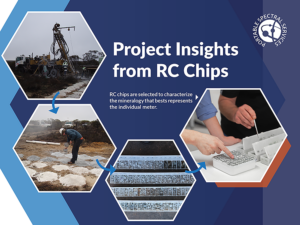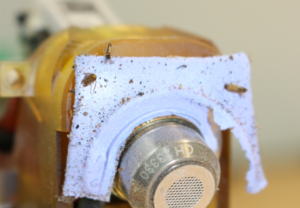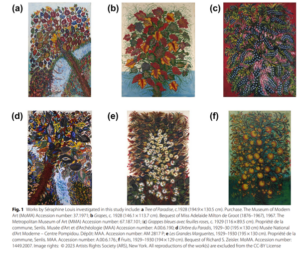
A Bright Future Ahead
Portable Spectral Services Announces Exciting Management Transition
Over the course of Australian history the coins used in circulation have changed multiple times from hole-punched Spanish coins to Dutch guilders, English pennies and now the Australian Dollar. One of the issues we have faced during these transitions is when the material value of the coin outweighs its value as a currency. What is your money really worth? And how can we use micro-XRF to find out the value of money?
The Australian Dollar was initially known as the Royal when first announced by Prime Minister Robert Menzies, in June of 1963. This name was highly contended by others including the Austral, Oz, Boomer, Roo and Dinkum (NMA, 2018). A few months later Harold Holt announced that the name of Australia’s new currency would be dollar due to the widespread disapproval of the “royal”.
One of the greatest issues faced with Australia’s new currency was in 1968 when the materials used to make those coins were worth more than their currency value. Specifically, the value of the original 50 cent piece which was made of 80% silver and 20% copper (Fig 1.). With nearly 10.6 grams of silver in every coin and the rising value of silver, the public had started to melt their coins and sell the raw materials for more than the coins were worth. If they were still in circulation today a single 50 cent piece would be valued at close to $11 at current silver prices. The round 50 cent piece was taken out of circulation in 1969 (RAMint). Similarly in 1992, as it became too expensive to produce, 1 and 2 cent coins were removed from circulation.
Figure 1 Silver 50 cent coin (CoinsandAustralia, 2022)
X-ray fluorescence (XRF) instruments have been widely used in the study and analysis of historical and circulating money, particularly coins. These instruments not only provide an excellent non-destructive method of analysis, but are also useful for identifying key factors of production and potential tampering. Micro-XRF (μXRF) enables chemical mapping of the coins at a high resolution. This is then used to assess the elemental makeup of each coin, how they differ, what the estimated value of their material is and if they match the specifications as supplied by the royal Australian mint.
A set of current Australian coins were analysed at a resolution of 75 µm to assess the above-mentioned characteristics of the coins. Table 1 displays the mapped elemental images of each coin and a list of trace elements that were detected.
Table 1 μXRF Elemental Maps of Australian Coins scanned using Bruker M4 TORNADO
Table 1 indicates there is a clear distinction in the major elements found in “silver” and “gold” coins. Australian one and two dollar coins are primarily made from aluminium and copper. Whilst 50, 20, 10 and 5 cent coins mostly contain copper and nickel with small amounts of manganese. The distribution of trace elements seems to be non-uniform and concentrated around the uneven areas of the coin, this is suggestive of potential contamination and possibly even early stages of corrosion.
From the elemental maps we can quantify the elemental composition of the coins (Table 2) and compare this against values supplied by the Royal Australian Mint. As shown in Table 2, the quantified values are within a percent of the values supplied by the Royal Australian Mint. The greatest differences lie with the presence of minor manganese and aluminium, predominantly in the coins of lower value. Manganese has been known to be used for hardening coins or as a substitution for other constituents. However it is often avoided due to causing increased wear on coin stamping machines.
Table 2 Composition of major elements in Australian Coins by μXRF
By using the current values of copper ($0.0137 per gram) and nickel ($0.0272 per gram) (Index Mundi, 2022), the weight of each coin and the percentage of nickel and copper supplied by μXRF we can estimate their material worth (Table 3). As seen in Table 3, the value of each coin sits under its currency value, but not by much when it comes to the 5, 10 and 20 cent coins. Interestingly, the coins that are worth the least compared to their currency value are the “gold” coins. Further, the 50 cent coin was shown to be the most valuable, likely due to its significant size and weight.
Table 3 Estimated Material Value of Australian Coins
This case study demonstrates that it may not currently be economical to start melting down or hoarding Australian “silver” coins. However, much like how 1 and 2 cent coins were taken out of circulation in 1992 due to cost of production not matching the value, this study indicates a similar trend may occur for current silver coins in circulation. The increasing material values of nickel and copper may be the first indicator for this decision as the material value will be removed from circulation in the future.
CoinsandAustralia. (2022, 01). coins-prices-melt-value. Retrieved from CoinsandAustralia: https://www.coinsandaustralia.com/
NMA. (2018, April 13). Decimal currency. Retrieved from https://www.nma.gov.au/defining-moments/resources/decimal-currency.
RAMint. (n.d.). Australian coins – a fascinating history. Retrieved from https://www.ramint.gov.au/sites/default/files/Australian%20coins%20a%20fascinating%20history.pdfhttps://www.ramint.gov.au/sites/default/files/Australian%20coins%20a%20fascinating%20history.pdf.

Portable Spectral Services Announces Exciting Management Transition

Our tool introduces uXRF (micro-X-ray fluorescence) scanning technology to RC chip analysis, enabling rapid, non-destructive, and quantitative analysis of major, minor, and trace mineral phases.

Automated micro-X-ray fluorescence (micro XRF) technology emerges as a powerful tool to rapidly and accurately capture the mineralogy of rock chip, RC and AC samples.

Findings of an ongoing regional evaluation study over concealed Proterozoic lithologies known to host magmatic nickel sulphides with potential to host other base-metal, gold and rare earth elements (“REE”) systems within the Fraser Range, Western Australia.

Findings of an ongoing regional evaluation study over concealed Proterozoic lithologies known to host magmatic nickel sulphides with potential to host other base-metal, gold and rare earth elements (“REE”) systems within the Fraser Range, Western Australia.

Findings of an ongoing regional evaluation study over concealed Proterozoic lithologies known to host magmatic nickel sulphides with potential to host other base-metal, gold and rare earth elements (“REE”) systems within the Fraser Range, Western Australia.
